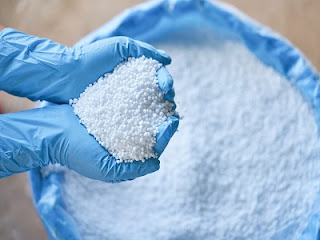For the Quarter Ending September 2023
The Urea market in North America initially displayed a positive trend during the first two months of the third quarter. However, a significant decline in prices occurred in September 2023. The price increase in the first two months of Q3 was mainly attributed to the robust performance of the downstream fertilizer sector. Additionally, international consumers actively built up their stocks in anticipation of the upcoming winter planting season. Nevertheless, in July, the Urea market faced challenges due to low water levels in the Panama Canal, leading to reduced exports of Ammonia from the USA to other importing countries. This resulted in an oversupply of Ammonia within the USA market. In August, the tightening availability of the material within the USA market became the primary driver behind rising Urea prices. Hurricane Idalia disrupted production activities, causing a shortage of supplies. However, in September, the Urea market turned bearish due to weak demand from importing nations, particularly Brazil. Buyers' reluctance to make bulk purchases exerted downward pressure on import prices, and this trend is expected to continue, weakening the Western market.
APAC:
The Asian Urea market initially followed an optimistic trend during the first two months of the third quarter, but prices saw a significant decline in September 2023. The price increase in the first two months of Q3 was primarily attributed to the robust performance of the downstream fertilizer sector. Moreover, international consumers actively built up their stocks in preparation for the upcoming winter planting season. Further, tight availability of the material within the Chinese market in August prompted a widened demand and supply gap. Inadequate weather conditions and typhoons disrupted production activities, causing a shortage of supplies. However, in September 2023, Urea prices declined in the Chinese market due to ample availability and a new government policy restricting fertilizer exports, resulting in an excess supply. Chinese ports currently store approximately half a million metric tons of Urea due to export limitations. Major Chinese Urea producers, like Zhongnong Group, decided to no longer enter new export contracts, redirecting supply to the domestic market, further limiting exports and exerting downward pressure on domestic prices.
Europe:
The European Urea market initially displayed an optimistic trend during the first two months of the third quarter but witnessed a significant price decline in September 2023. The price surge in the first two months of Q3 was primarily attributed to the strong performance of the downstream fertilizer sector. The Urea market in Russia experienced a substantial price increase due to robust demand for Russian material within the EU. Russian manufacturers expanded their reach to other parts of the world, contributing to rising Urea prices. However, in September 2023, the Urea market observed a decline in prices due to oversupply in Russia, a major European exporter. Additionally, the introduction of export duties on various fertilizers discouraged international buyers, leading to Urea stockpiles within the country. Moderate demand from the domestic fertilizer market further contributed to a narrowing gap between supply and demand.
The Urea market in Brazil initially displayed a positive trend during the first two months of the third quarter, but prices witnessed a significant decline in September 2023. The price surge in the first two months of Q3 was primarily attributed to the strong performance of the downstream fertilizer sector. During July and August 2023, there was a notable surge in the prices of imported Granular Urea driven by significant growth in fertilizer consumption, elevating Brazil's position in the global corn export market. Despite a 9% decline in Urea imports in the first half of the year, it is anticipated that imports will rebound in the coming months. In September 2023, Urea prices experienced a decline as consumers adopted a cautious stance, postponing purchases in hopes of further price reductions. Economic challenges and higher Urea costs in the exporting country, the USA, further dissuaded Brazilian buyers, exacerbating supply constraints in the domestic market.
MEA:
The Urea market in the Middle Eastern region had a positive outlook throughout the third quarter of 2023. Several factors, including the rising cost of essential feedstock, strong demand from international and domestic fertilizer markets, and disruptions in the supply chain, contributed to an increase in Urea prices. Elevated prices of essential feedstock such as Ammonia and upstream Natural Gas prompted higher production rates, resulting in an upswing in Ammonia prices. Robust demand for Ammonia, especially from international markets like India and Brazil, further boosted prices. In September, tight supply conditions in the Saudi Arabian market led to a further increase in Urea prices. Ma'aden, a major producer of feedstock Ammonia in Saudi Arabia, temporarily shut down its No.1 plant, causing a shortage of spot availability. The limited supply of feedstock material in the Saudi Arabian market resulted in reduced Urea production and exerted upward pressure on Urea prices.
About Us:
ChemAnalyst is an online platform offering a comprehensive range of market analysis and pricing services, as well as up-to-date news and deals from the chemical and petrochemical industry, globally.
Being awarded ‘The Product Innovator of the Year, 2023’, ChemAnalyst is an indispensable tool for navigating the risks of today's ever-changing chemicals market.
The platform helps companies strategize and formulate their chemical procurement by tracking real time prices of more than 400 chemicals in more than 25 countries.
ChemAnalyst also provides market analysis for more than 1000 chemical commodities covering multifaceted parameters including Production, Demand, Supply, Plant Operating Rate, Imports, Exports, and much more. The users will not only be able to analyse historical data but will also get to inspect detailed forecasts for upto 10 years. With access to local field teams, the company provides high-quality, reliable market analysis data for more than 40 countries.
Contact Us:
ChemAnalyst
GmbH - S-01, 2.floor, Subbelrather Straße,
15a Cologne, 50823, Germany
Call: +49-221-6505-8833
Email: sales@chemanalyst.com
Website: https://www.chemanalyst.com


